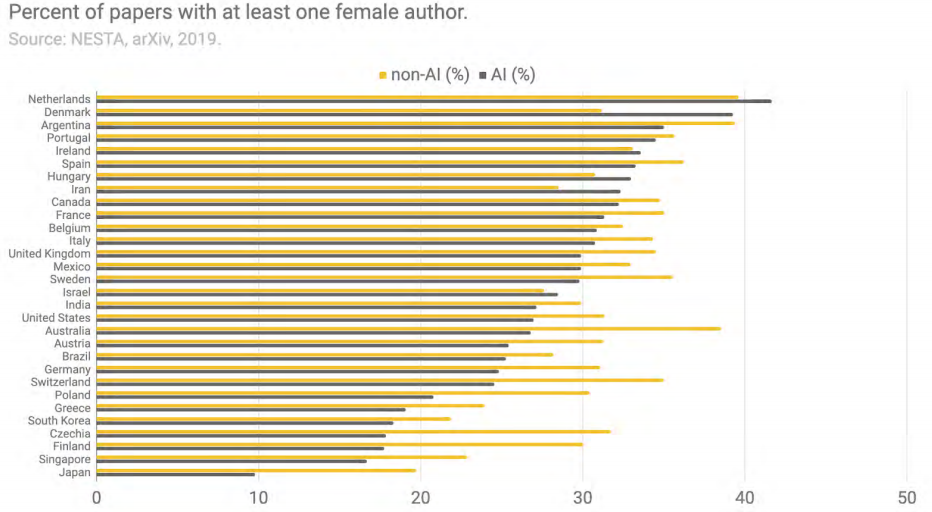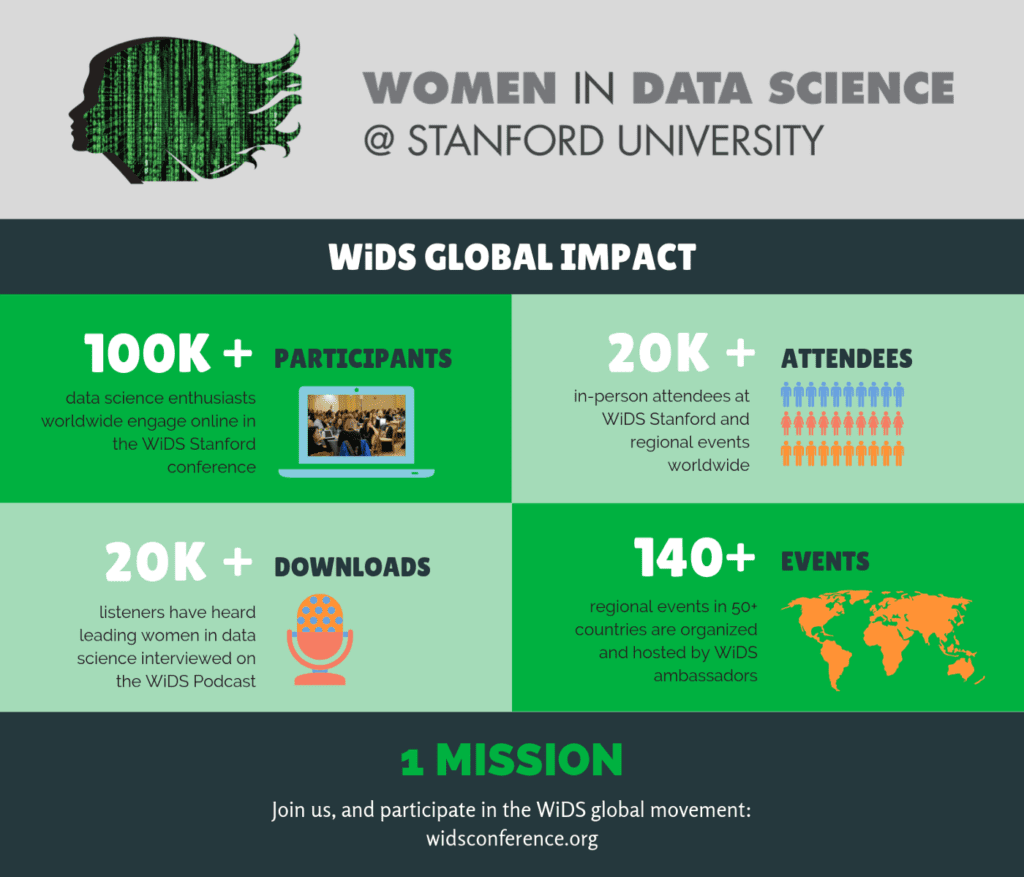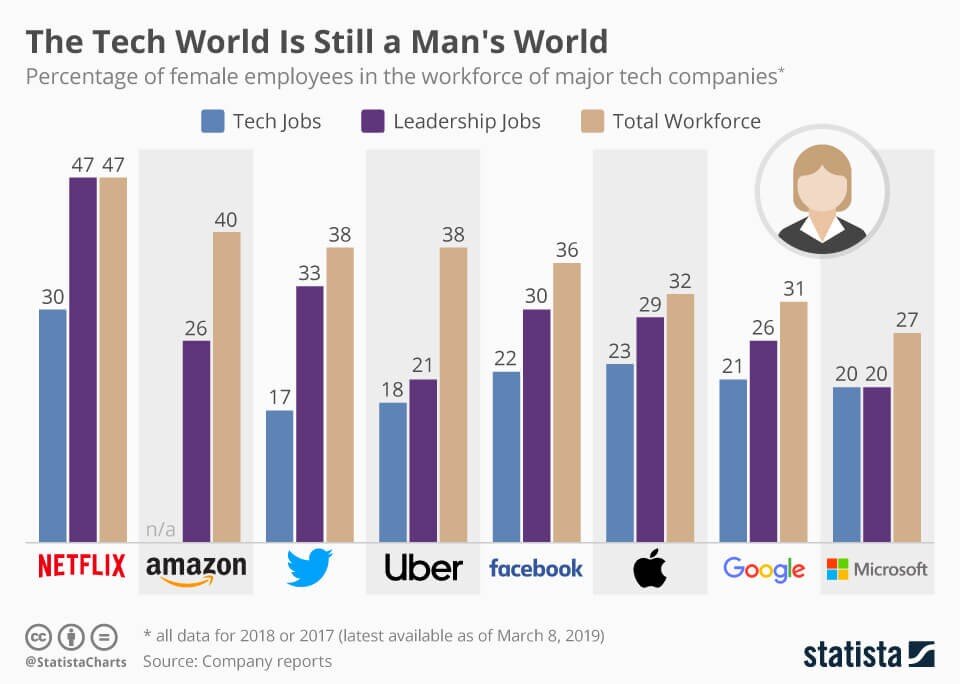The technology field is offering a wide range of opportunities for women and men alike. As a part of it, artificial intelligence and analytics also know a substantial growth over the past decades. More details on the interest explosion can be found in the attached article:

With such an important discovery comes many relevant questions, one of them is about the gender gap. Although it is not a man — woman fight. But, statistics always offer a clear vision of the field situation and if there is any “barrier to entry.” Low percentages are usually a big red flag. So what is the position of women in data science and related fields?
What is women’s share in Research & Development?
Research and development are some of the most significant fields both in academia and industry. Women’s presence in such a dynamic field is a crucial indicator.
In the field of Artificial intelligence, an analysis was conducted based on publications on arXiv to track the percent of papers with at least one female author.
** China, one of the world leaders in AI research, is excluded from the sample due to lower confidence in gender-labeling authors by name, and countries with less than 5,000 publications on arXiv are not considered in this analysis.

- Over 41% of the AI papers in the Netherlands and over 39% of AI papers in Denmark had at least one female co-author.
- Only 10 percent and 16 percent of those with Japanese and Singaporean affiliations had a female co-author.
- Malaysia, Denmark, Norway, and Israel show a stronger presence of women in AI research relative to non-AI papers.

Throughout 2000–2018, There is a significant growth in AI publications with female authors from Europe. Several countries have women as authors of over 30% of AI papers on arXiv, including Argentina, Canada, Iran, and many European countries (Portugal, Spain, France, Belgium, Italy, Netherlands, Denmark, Ireland, Hungary). In the US, the percentage of women authors in AI has decreased slightly over this period.
What about conference participation?
To study female participation in conferences, globally known examples were picked for illustrations. The first is an annual workshop hosted by an organization dedicated to supporting women in Machine Learning (WiML), and the second one is an AI education initiative designed to increase diversity and inclusion in AI(AI4ALL).


Both initiatives have known an important growth in program enrollment over the past years. The WiML workshop has 738% more participants than it had in 2014, and AI4ALL has 2000% more alumni than it had in 2015. These increases reflect a continued effort to include women and underrepresented groups in the AI field.
The third initiative is Women in Data Science (WiDS) that started in November 2015 with a one-day technical conference. The global conference features hundreds of women in academia, industry, government, and nonprofits. During its first five years, hundreds of thousands of people have participated in WiDS.

Job market?


Data shows the following trends:
- Men tend to have more AI occupations than women in all countries in the sample.
- High AI skill penetration for men doesn’t imply high AI skill penetration for women as well. Some countries rank significantly higher when considering only women than when considering men.

According to Adeva IT, as of 2018, women held only 25% of all the jobs in the tech industry, despite women making up almost half of the total workforce.
Faculty Diversity
Data shows that males constituted the clear majority of AI department faculty, making up 80% of AI professors on average across several leading computer science universities around the world.
- The highest percentage was in ETH Zurich with 35%.
- The lowest percentage was in IIT Madras with 7%.
There were no discernible differences in gender split across different regions of the globe, nor was there any correlation between the faculty gender split and department size.

While Women are still not close to equal representation, especially within the job market, there are increasing efforts in order to establish inclusion and diversity in both academia and industry. The gender gap in artificial intelligence and related fields is slowly but surely closing thanks to multiple existing initiatives that spread awareness and education around the globe. Another important factor decreasing this gender gap is that women are currently recognized for their outstanding achievements within the field, whether they are Business owners, researchers, or whatever position they hold in the industry.
Women and men should have equal chances to enter the AI field, and it is a shared responsibility to provide them that RIGHT.
About the author
Hajar is a Data-driven person dedicated to helping businesses to derive key insights from their Data. A dedicated volunteer for science and technology for more than three years. A Forever passionate student who is willing to continuously improve and help to advance the community. She Can be found on LinkedIn & Twitter.








